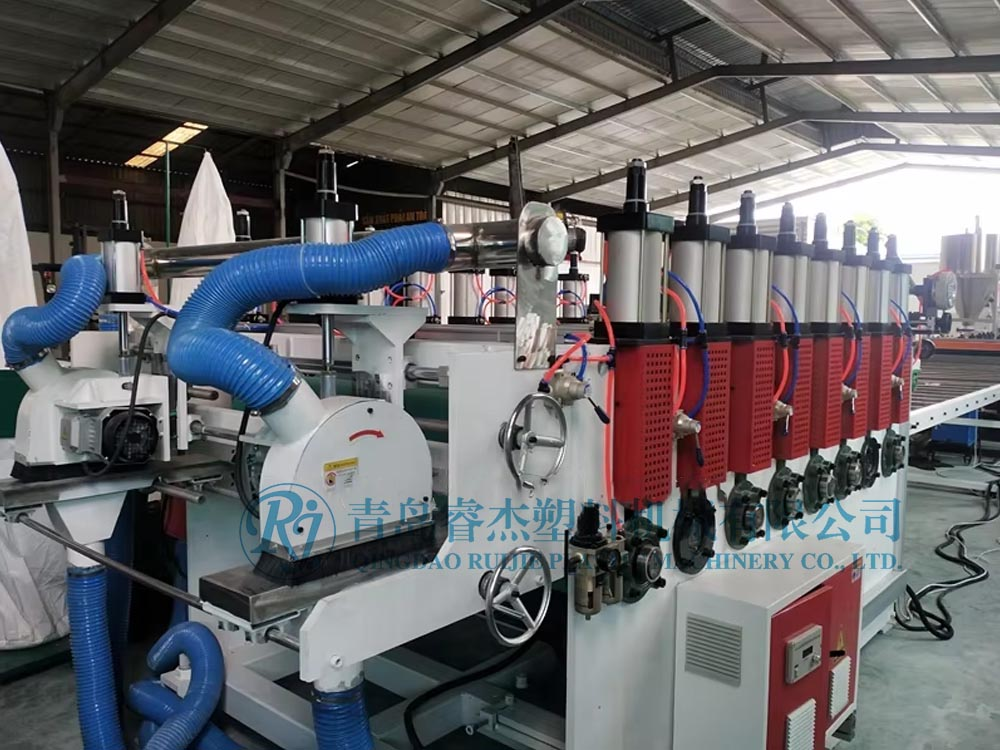Market Drivers Behind PVC Foam Board Production Line Automation
Surge in Demand for High-Precision Foam Board Products
The building and communication construction fields are increasingly demanding PVC foam boards with no defects and with precise size tolerances which can not be obtained manually. In things like architectural cladding, for signage requirements, specialty furniture you want millimetre perfect and consistent panel and if you’ve got a blemish on the surface it’s taking away from the look and also the structure. In laser-guided positioning and computerized mold calibration systems, and other precision systems, an automated production line reduces dimensional tolerances by 50% from manual processes.
Global Push for Industry 4.0 in Construction Materials Manufacturing
Industry 4.0 is becoming a priority for governments around the world as they seek to control the production of materials and ensure its evolution towards streamlined, interconnected systems that minimize human error. Energy consumption Comparison with the latest PVC manufacturing innovation trends, the use of automation has led to 22% improvement in process efficiency and output reliability. This operational synchronization helps improve manufacturers’ adherence to environmental standards, where Europe’s circular economy packaging laws are concerned.
Technical Challenges in Traditional PVC Foam Board Manufacturing
Quality Inconsistencies in Manual Production Processes
Manual production struggles with uneven material distribution and curing parameters, leading to structural weaknesses and surface defects. As noted in industry analyses, inconsistent temperature regulation results in irregular board densities, requiring additional quality checks and increasing rejection rates—especially for high-tolerance applications like waterproof signage or aerospace tooling.
Energy Waste Patterns in Conventional Mixing Systems
Outdated batch processing methods cause inefficiencies in conventional mixing systems, leading to unnecessary energy consumption. Studies reveal these systems consume 30-40% more power per unit produced compared to automated alternatives, conflicting with global sustainability goals in the building materials sector.
Operational Benefits of Automated PVC Foam Board Production Lines
40% Improvement in Production Cycle Efficiency
Automation synchronizes extrusion and curing stages, reducing cycle times by 39.8% (Industry Efficiency Report 2023). Servo-driven conveying systems maintain ±0.5mm positional accuracy, allowing manufacturers to increase daily output by 42% without expanding floor space or labor.
Real-Time Density Monitoring Through Smart Sensors
Embedded dielectric sensors track foam density at 200ms intervals, detecting variations as small as ±3kg/m³. This precision reduces structural defects by 67% compared to manual sampling, ensuring consistent quality for architectural and marine applications.
Predictive Maintenance Algorithms Reducing Downtime by 30%
Machine learning models forecast equipment wear 14–21 days in advance, leading to 31% fewer unplanned stoppages (Manufacturing Technology Institute 2023). Automated load balancing further cuts energy consumption by 22% per ton, optimizing motor efficiency during production cycles.
ROI Analysis: Automated vs Manual PVC Foam Production
Increased Production Capacity Utilization Rates
Automation boosts capacity utilization from 58% (manual) to 82–89%, enabling 24/7 production without quality loss. Smart scheduling increases annual output by 11,000 metric tons per line, with real-time viscosity control ensuring ±0.7% density accuracy.
Impact on Market Segmentation in PVC Foam Industry
Customization Capabilities for High-Density Marine Applications
Automation allows precise control over foam density (¥60 kg/m³), meeting marine-grade requirements for impact resistance and corrosion durability—previously unattainable manually. This creates a premium segment for shipbuilding and offshore applications.
Automated Lines Enabling Small-Batch Architectural Orders
Intelligent systems support economically viable runs as small as 50-100 sheets, eliminating minimum-order limits. Rapid reconfiguration enables custom solutions for curved façades, acoustic panels, and other niche designs while reducing inventory waste by 35%.
Regulatory Compliance Advantages Through Automation
ISO 9001 Compliance Automation in Quality Control
Closed-loop monitoring maintains tolerances within ±0.5% of specifications, generating digitized audit trails for full traceability. Machine learning reduces nonconformities by 34%, streamlining compliance with evolving international certifications.
Future Trends in PVC Foam Board Production Technology
AI-Powered Formulation Optimization Systems (2026 Forecast)
AI-driven adjustments will optimize:
- Marine-grade cross-linking agents
- Blowing agent distribution in architectural panels
- Stabilizer concentrations under temperature variations
These systems are projected to cut raw material waste by 25% and reduce energy use by 18% in mixing stages, achieving ±0.5% density tolerance in 98% of batches.
FAQ
What are the main benefits of automating the PVC foam board production line?
Automation enhances precision, reduces cycle times, improves quality consistency, lowers energy consumption, and minimizes human error, leading to significant operational efficiencies and cost savings.
How does automation impact the precision of PVC foam board manufacturing?
Automation significantly improves precision by reducing dimensional tolerances by 50% compared to manual processes, thanks to technologies like laser-guided positioning and computerized mold calibration systems.
What is the expected return on investment for automation equipment?
The initial investment ranges from $1.2M to $2.5M with robotic arms, precision extrusion systems, and smart sensor networks offering quick payback periods ranging from 6 to 18 months.
How does automation contribute to energy efficiency?
Automation cuts energy waste by up to 40% compared to conventional mixing systems, aligning with global sustainability goals and reducing operational costs in the long term.
Why is achieving compliance easier with automated systems?
Automated systems provide closed-loop monitoring, maintain precise tolerances, and generate audit trails, which streamline ISO 9001 compliance and other regulatory requirements.
Table of Contents
- Market Drivers Behind PVC Foam Board Production Line Automation
- Technical Challenges in Traditional PVC Foam Board Manufacturing
- Operational Benefits of Automated PVC Foam Board Production Lines
- ROI Analysis: Automated vs Manual PVC Foam Production
- Impact on Market Segmentation in PVC Foam Industry
- Regulatory Compliance Advantages Through Automation
- Future Trends in PVC Foam Board Production Technology
-
FAQ
- What are the main benefits of automating the PVC foam board production line?
- How does automation impact the precision of PVC foam board manufacturing?
- What is the expected return on investment for automation equipment?
- How does automation contribute to energy efficiency?
- Why is achieving compliance easier with automated systems?
